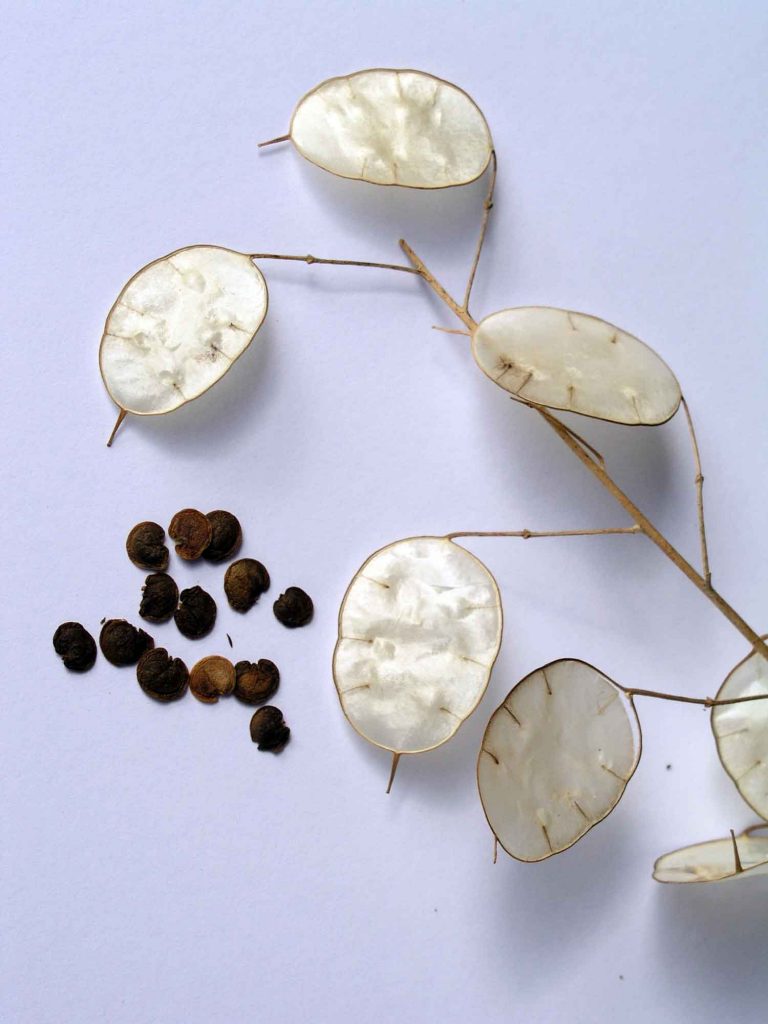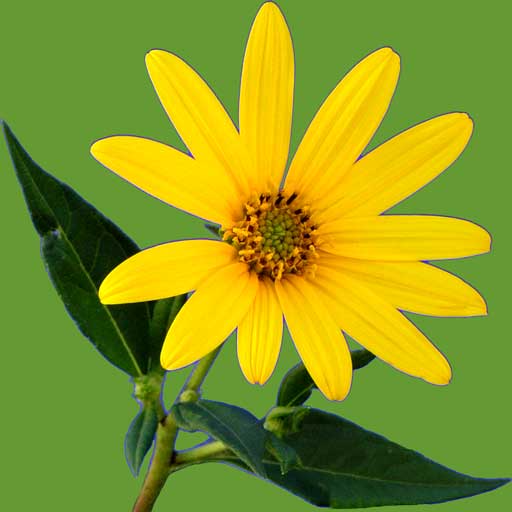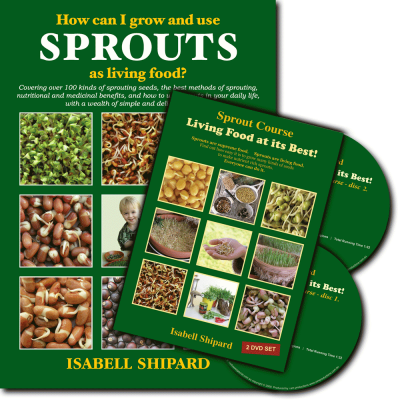Brassicas are a group of plants that we commonly use as foods, belonging to the Brassicaceae family.
Previously, this family had been called Cruciferae, which was a useful way of remembering them, as these plants all have the very typical cruciferae, cross-shaped flowers. Almost 3000 species belong in this family, most of them from temperate regions of the Northern hemisphere; used for their spice, oil attributes and as staple vegetables. Some of them we are quite familiar with, as they are seen in our supermarkets, while others are not so common. The following list, gives a few of the plants in this family:
Broccoli Brassica oleracea var. italica; Brussels Sprouts B. oleracea var. gemmifer; Cabbage B. oleracea var. capita; Cauliflower B. oleracea var. botrytis; Collards B. oleracea var. acephala Kale B. oleracea var. acephala; Kohl rabi B. oleracea var. gongylodes; Mibuna B. japonica; Swede B. napus; Mizuna B. juncea var. japonica; Mustard B. nigra and alba; Mustard lettuce B. juncea; Osaka Purple Mustard lettuce B. juncea var. rugosa; Rocket Eruca sativa; Turnip rapa; Vitamin Greens B. rapa cv; Wasabi Wasabi japonica; Watercress Nasturtium officinale; Cress Lepidium sativum; Bittercress Cardamine hirsta; Horseradish Armoracia rusticana; Radish Raphavus sativus; Money plant Lunaria annua.
Brassicas have small, thin, cylindrical seed capsules with tiny, light brown, to black, round seeds. As capsules may shatter readily, picking before they are completely dry is essential. Many of these plants are classified as annuals, however in warm temperate to sub-tropical climates, some of these vegetable species may extend to a biennial nature, particularly if stems and leaves are continually being picked. In tropical and sub-tropical areas, if wishing to grow the heading type brassicas, like cabbage and cauliflower, they are best grown during the cooler months, which may also minimise insect attack. All brassicas, when grown as sprouts for 3-7 days, will look very similar with 2 vivid green, kidney-shaped leaves. If the seeds are planted in soil, after several weeks of growth, the different species will develop their different characteristics; cauliflower and cabbage (and close allies like pak choi, and bok choi) will develop very large leaves, while cress, rocket and watercress, smaller foliage.

As many of the varieties of seeds for sprouting, in the brassica family, produce mildly, pungent to extremely strong, peppery flavours, keep in mind that eating the sprouts may tingle the tongue and irritate the digestive tract, for some sensitive people. Pungent foods promote heat in the body and a kilojoule-burning action, which may be used to advantage by anyone wishing to lose excess weight and ‘kick-start’ the metabolism into high gear. Studies have shown that hot flavoured foods and seasonings can triple the body’s ability to burn calories for fuel, rather than store them as fat.
Pungent foods help discharge toxins, stimulate the circulation and are beneficial to the respiratory system, the colon, and act to trigger the production of endorphins. Endorphins are sometimes called happy hormones, since they give a feeling of wellbeing and aid healing by relieving pain, thus helping to build a stronger immune system. Mixing these peppery sprouts, in a tossed salad with bean sprouts, provides a good combination of flavours and helps us to, gradually, acquire a taste for the pungent foods.
All brassicas are an excellent source of sulphur, an important mineral for its cleansing and antiseptic effect, on the blood and digestive system. Sulphur is essential for healthy hair, nails and skin and for protein and carbohydrate absorption. Sulphur-rich foods also help provide oxygen to the blood and together with the mineral chlorine, work as a synergistic force, in cleansing the body of wastes, clearing congestion like sinusitis, assisting liver and immune function, and weight loss. Note, that the heat of cooking may diminish some sulphur, antioxidants, enzymes and other, disease preventing, properties; therefore, eating the raw sprouts is the most beneficial way of getting the benefits that brassicas have to offer.
Other valuable components of brassicas include: boron, calcium, silicon, bromine, magnesium, molybdenum, potassium and phosphorous for building and preserving strong teeth and bones. A very rich source of the antioxidant vitamin A, essential for stimulating the secretion of gastric juices, particularly important for protein digestion, it is a vitamin vital for healthy eyes, and to provide immunity from infections and disease. The mineral iron, is enhanced in its actions, by the rich content of vitamin C. Brassicas are rich in iodine, important in regulating the functions of the body’s metabolism. It is essential for energy utilisation and for normal growth of children: a lack of iodine can retard both the physical and mental development of children, since a deficiency in iodine can lead to serious thyroid problems. About 30% of iodine intake is required by the thyroid gland for efficient function and important for the production of thyroxine, which plays a part in regulating cholesterol levels. Note: as brassicas contain thioglucoside compounds that may disrupt the function of the thyroid gland, this could be an important consideration for people deficient in iodine, who may need to monitor iodine levels, take iodine tablets, or limit the intake of brassicas.
Brassicas are also rich in B vitamins, and vitamins C, E, K and fibre. Lignans are the insoluble fibres in brassicas. When lignans reach the colon, they ferment into mammalian lignans and generate short-chain fatty acids that have the ability to act as a defence mechanism, against cancer.
The mammalian lignans have a structural resemblance to oestrogen and can bind to oestrogen receptors. Depending on a woman’s oestrogen status, lignans can either act as an oestrogen-enhancing agent or as an anti-oestrogen to guard the cells against oestrogen overload. For premenopausal women with an abundance of oestrogen, lignans will compete with circulating oestrogen and decrease the amount of oestrogen that the cells are exposed to. For menopausal or post-menopausal women, who have low oestrogen levels, the lignans will act like a source of oestrogen, adding to the pool of circulating oestrogenic substances, working as an oestrogen proxy.
The lush, green colour of leaves of all brassica seed sprouts, tells us they are very rich in living enzymes and chlorophyll, which can strengthen the immune system and increasing vitality. When we eat greens regularly, they act as a catalyst promoting healing, building blood, rejuvenating old cells, providing beneficial intestinal flora, aiding regular bowel elimination and increasing circulation of blood and oxygen.
What else can bless us in these food plants? Scientific research has discovered powerful phytochemicals. The prefix ‘phyto’ means plant; its pronunciation is significant… ‘fight-o’ and a wonderfully novel way of remembering that these plants have the built-in strategy to… fight-on-our-behalf. Phytochemicals, not only have the power to fight on our behalf, but also to kill… to kill free radicals, that are cellular killers, causing havoc by damaging DNA, corroding cell membranes and altering biochemical balance. Phytochemicals include indole- 3-carbinol, (I3C), benzl isothiocynate, dithiolethione, glucoraphanin, and zeaxanthin, which are considered to be some of the most powerful anti-cancer substances known. In countries, where a daily intake of cruciferous vegetables is routine, statistics show low rates of cancer. For this reason, researchers encourage us to include at least 3-4 servings of brassicas a week. Eating brassicas, regularly, has been found to have an inhibiting effect on the microscopic yeast fungi, Candida albicans; which can cause multiple symptoms throughout the gut and respiratory passages. The toxins, produced in these areas, may act on every part of the body, including the nervous system.
Indole-3-carbinol (I3C) is formed, during the actual process of chewing brassicas. The action of chewing releases the enzyme myrosinase, which is mixed with the enzyme glucobrassicin, to activate I3C. This phytochemical is able to fight cancer in a variety of ways. It acts as a blocking agent against cancercausing substances, by inducing the activity of phase II enzyme glutathione-S-transferase; at the same time, it stimulates the many-faceted, oxidase system. I3C also helps to guide oestrogen metabolism and steer oestrogen production towards a safer form of oestrogen that does not promote the growth of oestrogendependant cancers. In human studies, I3C has shown specific anti-growth effects, in breast cancer cells. When I3C has been administered, with or prior to, a known cancer-causing agent, it has provided a chemoprotective effect.
Benzl isothiocynate acts to block and suppress cancer. As a blocking agent, it helps prevent cancer before it gets established and, as a suppressant, it works to inhibit the expression of cancer, in its early stages. It is believed that all brassica species may be protective against cancer.
Dithiolethione activates glutathione-S-transferase (GST), which then is activated to stimulate the antioxidant glutathione. It has been found, in research, that dithiolethione can block the action of aflatoxins. In many areas of the world, where food is grown, stored and prepared in less than hygenic conditions, food maybe contaminated with aflatoxins, resulting in liver cancer being a major cause of death.
Glucoraphanin (SGS) converts in the body to sulforaphane, which is considered to be the strongest natural inducer of the body’s own enzymes, against carcinogens. It is found, within hours of the brassicas being eaten, sulforaphane enters the blood stream and goes to action to detoxify carcinogens and carry them away from the cells.
Over 125 recent research studies show the protective benefits of sulforaphane, and that broccoli sprouts are an excellent source. Researchers found that sulforaphane kills Helicobacter pylori, the bacteria that can cause stomach ulcers, which may lead to stomach cancer. Other studies showed that by consuming broccoli sprouts, cancer cells were inhibited, and further research, found growth of colon cancer cells and many kinds of pre-cancerous cells were stopped. In the early 1990’s researchers at John Hopkins University School of Medicine, USA, found 3-day-old broccoli sprouts contained concentrations of glucoraphanin that were up to 50 times greater than those found in the mature broccoli vegetable. However, of more than 50 varieties of sprouts tested, only a few varieties produced sprouts that contained these consistently high concentrations.
Recent research also indicates that the regular consumption of broccoli sprouts may reduce high blood pressure, risk of heart disease and stroke. Studies are in progress to see if eating a small handful of the sprouts, daily, can supply the same level of chemo-protection as 1kg of the broccoli vegetable, when eaten weekly. As it is found that the heat used in cooking brassica vegetables, can destroy some of the valuable healthgiving properties; perhaps, using them raw, in salads, coleslaw and sauerkraut, could be the best way of getting all the goodies. As broccoli, kale and Brussels sprouts are very high in sulforaphane, we do our liver a good service by eating these vegetables regularly, as the liver is able to use it for converting toxins into nontoxic waste.
Phytochemical zeaxanthin forms the yellow pigment in the eye, and its intake is considered to be a powerful force, to prevent macular degeneration. Many of the brassicas are a good source of alphalipoic acid, which functions as an antioxidant and scavenger of free radicals in the body; also being beneficial to diabetics, for vascular complications, and to improve vasodilation of blood vessels. In research, many of the brassicas, particularly Brussels sprouts, broccoli and cabbage, have been found to be a good source of the antioxidant, superoxide dismutase (SOD). See page 21 for importance of SOD.
Coenzyme Q10 is another valuable component. It is an energy coenzyme that plays an essential role in mitochondrial electron transport and is fundamental for energy production, in our cells. Being an antioxidant, it has an ability to quench free radicals and aids the structural integrity and stability of cell membranes, including intracellular membranes. It also serves to reduce oxidation of low-density lipoproteins (LDL) cholesterol.
The fresh juice of brassicas have been utilised for drawing toxins out of the system, by helping to eliminate the uric acid of gout, arthritis and other conditions. Poultices, of the leaves, are applied to areas of muscular pain, sciatica, neuralgia, fibrositis, headaches and arthritis.
Brassicas are a source of glycosides and mustard oil, which are used as internal antiseptics, tissue and skin cleansers, to remove acidity from the body and as a tonic. Many of the brassicas have been studied and extensive research and reviews show that there are many mechanisms in these plants that have potential, to be protective against cancer and degenerative diseases.
… … omitted text, please see How can I grow and use Sprouts as living food? for full text.
Watercress
is one Brassica species that loves to be transferred to a pot, to extend its life, as it is perennial and will be perpetual, if regularly fertilised. Regular picking keeps new growth developing, otherwise the stems of watercress tend to get long, lanky and lose vibrancy.
I believe that watercress is one of the most valuable greens we can eat. It is an excellent source of calcium and folic acid. Watercress contains more sulphur than any other vegetable, except horseradish (which also belongs in the brassica family, see below). Watercress is a good source of all essential minerals, as well as vitamins (including B17). Also noteworthy, is the fact that watercress is a food with an alkalinity of 8.1 (pH) in metabolic reaction. This makes it valuable in our daily diet, for counteracting acid systems, usually caused by the overall consumption of too many acid foods, processed foods, stresses and pollutants in the environment. The alkalising benefits of watercress helps to neutralise acidic wastes in the lymphatic system and increases circulation, while simultaneously delivering minerals to the cells.
Use watercress regularly, it is a powerful purifier of the blood and toner of the body. Watercress, with its valuable array of nutrients and constituents, provides valuable, rejuvenating actions that assist to remedy: anaemia, endocrine imbalances, including thyroid and pituitary deficiencies; osteoporosis and mineral deficient conditions. It has a beneficial effect upon the skin, and is effective in helping to heal chronic cases of eczema, pimples, acne, and other skin conditions. Watercress is the richest known source of isothiocyanate, a powerful phytochemical, which acts to maintain healthy lungs and protect from environmental chemicals.
Watercress is a source of the mineral germanium. Germanium acts as an antiviral, antibiotic and body detoxifier, oxygen carrier and a catalyst; strengthening bone mass, the immune system and biologically stimulating electrical impulses at cell level: as such, it plays an integral role in providing therapeutic benefits against cancer cells. Germanium also plays a role as an adaptogen, helping the body to help itself, working to alleviate minor or major health imbalances, or to keep the body free of problems, thus acting both as a therapeutic and preventative. Watercress is one of the best sources of iodine, other than kelp. Iodine is an important mineral, for healthy function of the thyroid gland.
Watercress stimulates digestive juices. The tangy taste and smell of the leaves, when crushed, are indicated in the plants generic name, Nasturtium, which comes from Latin ‘nasi tertium’ meaning nose twitching, no doubt due to the peppery taste, which causes a contraction of nasal and mouth muscles. The species name ‘officinale’ refers to the herb being noted in the ‘official list’ of the most important, medicinal herbs, a place most deserving for watercress, as there are few herbs that are richer in the large array of vitamins and minerals essential to the human body. Add watercress to salads, sandwiches, soups, pita bread, dips, rice dishes, stuffing and as a garnish. Mixing the pungent flavoured leaves, of watercress, in a salad with slices of creamy-textured avocado, makes a great combination. Serve leaf springs with diced pineapple, pawpaw and orange segments.
… … omitted text, please see How can I grow and use Sprouts as living food? for full text.


